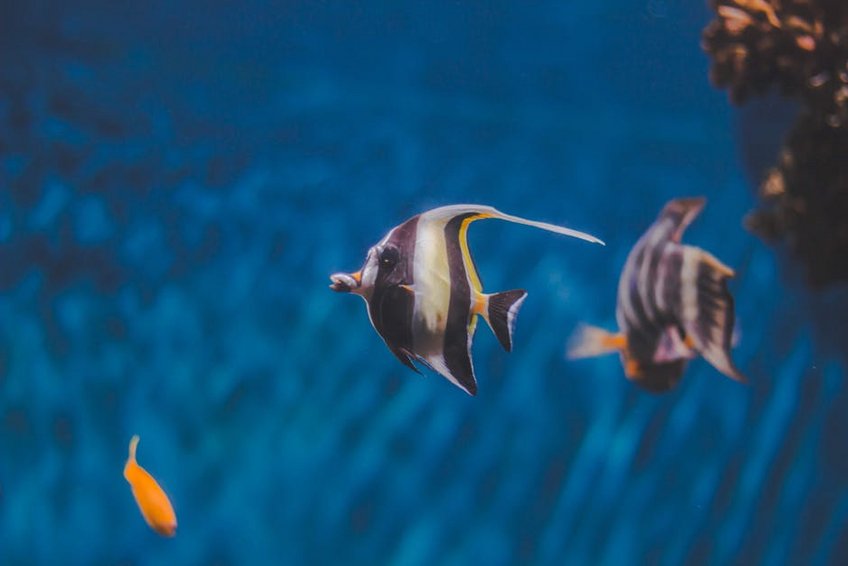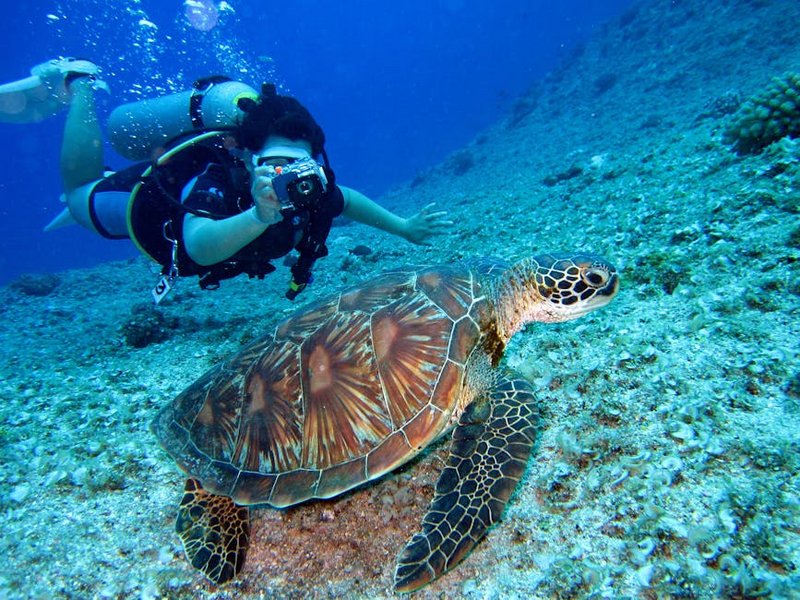Honduras Roatán Coral Reef: Your Ultimate Underwater Adventure Guide
Imagine floating above vibrant coral gardens where parrotfish dart between sea fans and eagle rays glide effortlessly through crystal-clear Caribbean waters—this is the mesmerizing world of the Honduras Roatán Coral Reef. As part of the Mesoamerican Barrier Reef System, the second-largest reef system globally, Roatán’s underwater paradise offers unparalleled biodiversity with over 500 fish species and 65 types of coral. You’ll find yourself immersed in an aquatic wonderland where shallow reefs perfect for snorkeling transition into dramatic wall dives plunging thousands of feet. The reef’s health has been carefully protected through marine park initiatives, ensuring sustainable tourism practices that preserve this natural treasure for future generations. Whether you’re a seasoned diver seeking adrenaline-pumping drift dives or a first-time snorkeler curious about marine life, the Honduras Roatán Coral Reef delivers unforgettable experiences that will reshape your understanding of ocean ecosystems. From the moment you dip below the surface, you’ll discover why this Caribbean gem remains a bucket-list destination for underwater enthusiasts worldwide, combining accessibility with pristine marine environments that few other locations can match.
Honduras Roatán Coral Reef – Essential Information
Before embarking on your aquatic adventure, understanding the Honduras Roatán Coral Reef’s fundamental characteristics will enhance your appreciation and preparation. This magnificent reef system stretches approximately 1,000 kilometers along Central America’s Caribbean coast, with Roatán positioned at its heart within Honduras’ Bay Islands. The reef’s formation began thousands of years ago through coral polyp colonization on submerged volcanic ridges, creating the complex ecosystem you can explore today. Water temperatures remain consistently warm between 79-84°F (26-29°C) year-round, with visibility often exceeding 100 feet (30 meters) during optimal conditions. The marine protected area encompasses several zones with varying access regulations, including the Roatán Marine Park which implements mooring buoys to prevent anchor damage and organizes regular reef clean-up initiatives. You’ll notice the reef’s incredible biodiversity immediately, with hard corals like elkhorn and staghorn creating intricate structures that shelter countless marine species while soft corals like sea whips and gorgonians sway gently in the currents.
What is the Roatán Coral Reef? – Understanding the Ecosystem
- The Honduras Roatán Coral Reef represents the Caribbean’s healthiest section of the Mesoamerican Barrier Reef, featuring both fringing reefs close to shore and spectacular vertical walls that drop to abyssal depths, creating diverse habitats for marine life.
- This living ecosystem supports incredible biodiversity including endangered species like hawksbill turtles, queen conch, and Nassau grouper, alongside seasonal visitors such as whale sharks during spring plankton blooms.
- Coral conservation remains paramount, with ongoing efforts combating threats like coral bleaching through nurseries cultivating resilient species and implementing sustainable tourism practices that minimize human impact.
- Budget travelers can enjoy the Honduras Roatán Coral Reef through shore snorkeling from public beaches ($0 access), affordable hostel accommodations ($15-30 USD/night), and bring-your-own-gear options, with daily expenses averaging $50-75 USD including meals and local transportation.
- Mid-range visitors typically spend $100-200 USD daily for comfortable hotels, organized boat snorkeling tours ($35-50 USD), or two-tank dive packages ($80-120 USD), plus dining at local restaurants and occasional taxi rides between sites.
- Luxury experiences include all-inclusive dive resorts ($300-500 USD/night), private boat charters ($400-800 USD/day), premium underwater photography services, and fine dining, with comprehensive week-long packages ranging from $2,500-5,000 USD per person.
- Roatán Marine Park Official Website
- Lonely Planet Roatán Travel Guide
Key Facts and Geographical Features
Spanning Roatán’s entire 40-mile (64-kilometer) length, the Honduras Roatán Coral Reef system presents varied underwater topography that caters to different experience levels and interests. The western end near West Bay Beach offers gentle, shallow reefs ideal for beginner snorkelers, while the northern coast features dramatic drop-offs favored by advanced divers. Key geographical formations include the legendary Mary’s Place fissure dive site, where narrow volcanic cracks descend into darkness adorned with colorful sponges, and the Spooky Channel labyrinth winding through coral canyons. The reef’s proximity to shore—often just 100-300 feet (30-90 meters) from beaches—makes it exceptionally accessible compared to other global dive destinations. Tidal patterns create moderate currents that nourish the coral ecosystem while providing exciting drift diving opportunities, particularly along the island’s northern edge where nutrient-rich waters support dense coral growth and larger pelagic species.
Honduras Roatán Coral Reef – Planning Your Trip
Strategic planning ensures you maximize your Honduras Roatán Coral Reef experience while accommodating seasonal variations, budget considerations, and personal preferences. You’ll want to research dive operators and snorkeling tours in advance, as reputable companies often book quickly during peak seasons, and verify their conservation credentials since responsible tourism directly supports reef protection. Consider obtaining certification before arrival if you’re interested in scuba diving, though many operators offer discover scuba programs for beginners. Your packing list should include reef-safe sunscreen to prevent chemical damage to corals, underwater cameras for capturing memories, and light wetsuits for extended time in the water despite warm temperatures. Budget allocation should account for marine park conservation fees (typically $10-15 USD), equipment rentals if you’re not bringing your own gear, and potential additional costs like underwater photography services or specialty night dives. Travel insurance with dive coverage provides peace of mind, while understanding the island’s infrastructure helps you plan transportation between dive sites and accommodations efficiently.
Best Time to Visit Roatán Coral Reef
Timing your Honduras Roatán Coral Reef adventure requires balancing weather patterns, water conditions, and crowd levels to create your ideal experience. December through April offers the driest weather with minimal rainfall and calm seas, providing excellent visibility exceeding 100 feet (30 meters)—perfect for underwater photography and spotting elusive species. However, this peak season brings higher accommodation prices and more visitors at popular sites. May through November represents the wet season with occasional afternoon showers, but you’ll enjoy warmer water temperatures, fewer crowds, and lower prices while still experiencing good visibility, particularly during morning dives. Hurricane season peaks from August to October, though Roatán’s southern Caribbean location provides some protection, with dive operators monitoring conditions closely. For unique wildlife encounters, visit between March and June when whale shark sightings increase, or plan around the full moon in autumn to witness spectacular coral spawning events that transform the reef into an underwater snowstorm of reproductive activity.
Budget Planning and Costs
Essential Preparation Checklist
Proper preparation transforms your Honduras Roatán Coral Reef visit from good to extraordinary, ensuring you’re equipped for both safety and enjoyment throughout your aquatic adventures. Begin by verifying your passport validity—US and EU citizens receive 90-day visa-free entry—and consider travel insurance covering dive accidents and equipment loss. Medical preparation should include consulting your doctor about seasickness remedies if needed and ensuring your tetanus vaccination is current since coral cuts require proper care. Your gear checklist must feature reef-safe sunscreen, swimwear, quick-dry towels, and certification cards if you’re a diver, while leaving behind harmful products like aerosol sprays that can damage marine ecosystems. Research and book reputable dive operators in advance, reading recent reviews to confirm their safety standards and environmental practices. Finally, familiarize yourself with basic Spanish phrases for interacting with local communities and study reef etiquette guidelines to minimize your environmental impact while maximizing your connection with this underwater wonderland.

Honduras Roatán Coral Reef – Top Attractions and Activities
Your exploration of the Honduras Roatán Coral Reef unveils world-class sites catering to diverse interests and skill levels, from tranquil snorkeling gardens to adrenaline-pumping deep wall dives. The reef’s most celebrated section lies within the Roatán Marine Park, where meticulously maintained mooring systems protect corals while providing easy access to spectacular sites like the renowned West End Wall. Here, you’ll drift along vertical coral faces swarming with creole wrasse and occasional reef sharks, while shallower sections reveal magnificent elk horn coral formations teeming with juvenile fish. Beyond traditional diving and snorkeling, innovative experiences await, including underwater scooters that let you cover more territory effortlessly and nighttime dives where biofluorescent corals create otherworldly displays. For non-swimmers, glass-bottom boat tours offer panoramic reef views, while submarine adventures descend to 100 feet (30 meters) for intimate encounters without getting wet. Several operators provide underwater photography courses, helping you capture professional-quality images of the vibrant marine life that makes this ecosystem so extraordinary.
Must-See Highlights and Iconic Sites
Certain locations within the Honduras Roatán Coral Reef have achieved legendary status among diving communities, offering unforgettable encounters that define the region’s underwater reputation. Mary’s Place remains the island’s most famous dive, featuring a spectacular fissure created by volcanic activity where you can swim between narrow walls adorned with colorful sponges, black coral trees, and schools of grunts. The Spooky Channel presents an exhilarating maze swim-through at moderate depths, with sunlight filtering through crevices to illuminate parrotfish grazing on algae-covered corals. For snorkelers, West Bay Beach provides unparalleled accessibility, where just steps from shore you’ll find thriving coral gardens populated by angelfish, trumpetfish, and occasional spotted eagle rays. The Pillar Coral Forest showcases rare coral formations resembling underwater trees, while Calvin’s Crack offers an advanced dive through a dramatic split in the reef teeming with macro life like seahorses and flamingo tongues. Each iconic site presents unique photographic opportunities and wildlife encounters that will remain vivid in your memory long after you’ve surfaced.
Hidden Gems and Local Favorites
Venturing beyond the well-trodden paths reveals the Honduras Roatán Coral Reef’s best-kept secrets, where tranquility and exceptional biodiversity create truly magical experiences away from crowds. On the island’s less-developed eastern end, you’ll discover sites like Tortuga Reef, where hawksbill turtles frequently nest on nearby beaches and green moray eels peer from coral crevices amidst minimal human traffic. Local guides often recommend Tex’s Place for its magnificent coral cathedral formations and reliable octopus sightings, while fishermen’s knowledge leads to spots like Ginger’s Corner where dolphin encounters occasionally complement spectacular reef scenery. The submerged wreck at Aguila provides an artificial reef ecosystem attracting enormous schools of snapper and barracuda, with penetration dives available for certified wreck enthusiasts. For something completely different, consider a mangrove kayak tour through Jonesville’s labyrinthine waterways, where you’ll observe how coastal ecosystems support the broader reef system while spotting juvenile fish and coastal birds before they migrate to deeper waters.
Honduras Roatán Coral Reef – Practical Travel Information
Navigating the practical aspects of your Honduras Roatán Coral Reef journey ensures smooth transitions between airport, accommodation, and dive sites while maximizing your time in the water. You’ll arrive through Juan Manuel Gálvez International Airport (RTB), with direct flights available from major US hubs like Miami, Atlanta, and Houston, plus connecting flights through mainland Honduras. Upon arrival, transportation options include taxis, rental cars, or organized transfers from your resort, though many dive operations provide complimentary pickup services for booked clients. The island’s main tourism infrastructure concentrates in West End and West Bay, where you’ll find dive shops, restaurants, and accommodations within walking distance of prime reef access points. Currency exchange favors US dollars widely accepted alongside Honduran lempiras, with ATMs available in larger communities, though carrying smaller bills proves useful for tips and local purchases. Communication presents little challenge since English functions as the primary language in tourism areas, complemented by Spanish in local communities, while cellular coverage remains reliable near populated regions with Wi-Fi available at most hotels and cafes.
| Category | Options/Features | Price Range (USD) |
|---|---|---|
| Dive Packages | Two-tank boat dives with guide, equipment rental included | $80-120 per day |
| Snorkeling Tours | Half-day boat trips to multiple sites, gear provided | $35-50 per person |
| Accommodation | Beachfront hotels to eco-lodges, varying amenities | $50-400 per night |
| Marine Park Fees | Conservation contribution, valid 1-12 months | $10-15 per person |


